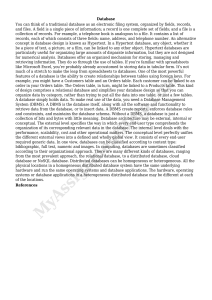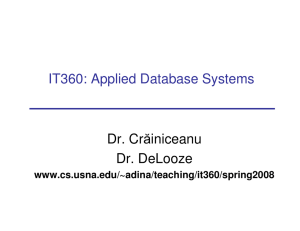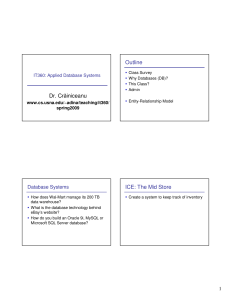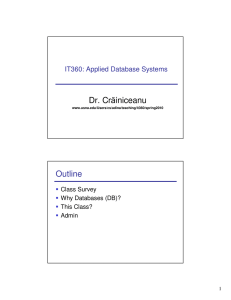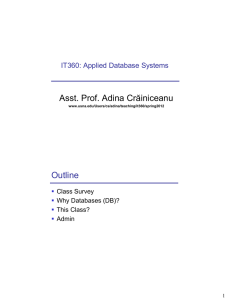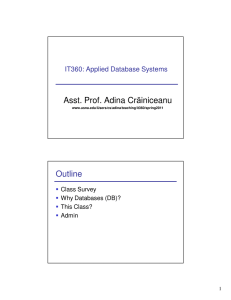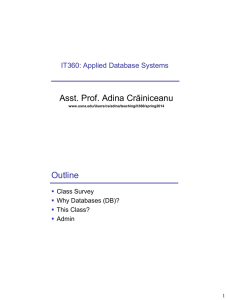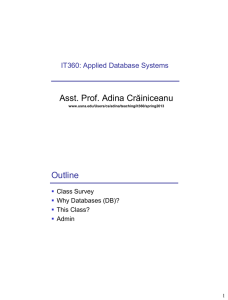Word document
advertisement
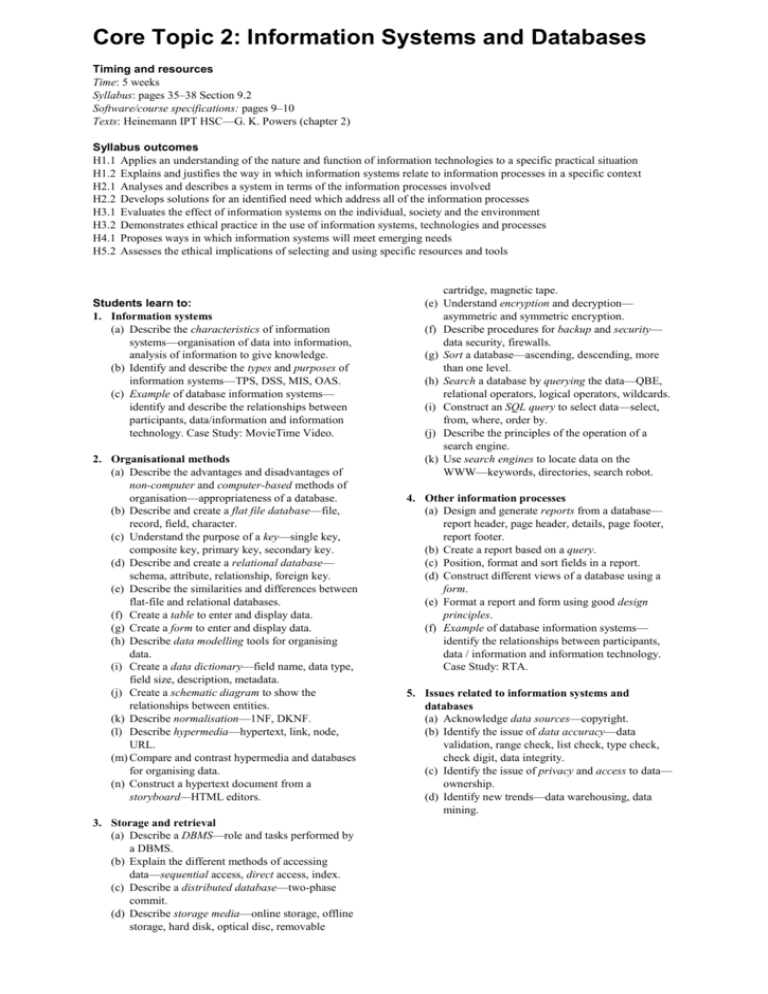
Core Topic 2: Information Systems and Databases Timing and resources Time: 5 weeks Syllabus: pages 35–38 Section 9.2 Software/course specifications: pages 9–10 Texts: Heinemann IPT HSC—G. K. Powers (chapter 2) Syllabus outcomes H1.1 Applies an understanding of the nature and function of information technologies to a specific practical situation H1.2 Explains and justifies the way in which information systems relate to information processes in a specific context H2.1 Analyses and describes a system in terms of the information processes involved H2.2 Develops solutions for an identified need which address all of the information processes H3.1 Evaluates the effect of information systems on the individual, society and the environment H3.2 Demonstrates ethical practice in the use of information systems, technologies and processes H4.1 Proposes ways in which information systems will meet emerging needs H5.2 Assesses the ethical implications of selecting and using specific resources and tools Students learn to: 1. Information systems (a) Describe the characteristics of information systems—organisation of data into information, analysis of information to give knowledge. (b) Identify and describe the types and purposes of information systems—TPS, DSS, MIS, OAS. (c) Example of database information systems— identify and describe the relationships between participants, data/information and information technology. Case Study: MovieTime Video. 2. Organisational methods (a) Describe the advantages and disadvantages of non-computer and computer-based methods of organisation—appropriateness of a database. (b) Describe and create a flat file database—file, record, field, character. (c) Understand the purpose of a key—single key, composite key, primary key, secondary key. (d) Describe and create a relational database— schema, attribute, relationship, foreign key. (e) Describe the similarities and differences between flat-file and relational databases. (f) Create a table to enter and display data. (g) Create a form to enter and display data. (h) Describe data modelling tools for organising data. (i) Create a data dictionary—field name, data type, field size, description, metadata. (j) Create a schematic diagram to show the relationships between entities. (k) Describe normalisation—1NF, DKNF. (l) Describe hypermedia—hypertext, link, node, URL. (m) Compare and contrast hypermedia and databases for organising data. (n) Construct a hypertext document from a storyboard—HTML editors. 3. Storage and retrieval (a) Describe a DBMS—role and tasks performed by a DBMS. (b) Explain the different methods of accessing data—sequential access, direct access, index. (c) Describe a distributed database—two-phase commit. (d) Describe storage media—online storage, offline storage, hard disk, optical disc, removable cartridge, magnetic tape. (e) Understand encryption and decryption— asymmetric and symmetric encryption. (f) Describe procedures for backup and security— data security, firewalls. (g) Sort a database—ascending, descending, more than one level. (h) Search a database by querying the data—QBE, relational operators, logical operators, wildcards. (i) Construct an SQL query to select data—select, from, where, order by. (j) Describe the principles of the operation of a search engine. (k) Use search engines to locate data on the WWW—keywords, directories, search robot. 4. Other information processes (a) Design and generate reports from a database— report header, page header, details, page footer, report footer. (b) Create a report based on a query. (c) Position, format and sort fields in a report. (d) Construct different views of a database using a form. (e) Format a report and form using good design principles. (f) Example of database information systems— identify the relationships between participants, data / information and information technology. Case Study: RTA. 5. Issues related to information systems and databases (a) Acknowledge data sources—copyright. (b) Identify the issue of data accuracy—data validation, range check, list check, type check, check digit, data integrity. (c) Identify the issue of privacy and access to data— ownership. (d) Identify new trends—data warehousing, data mining.
